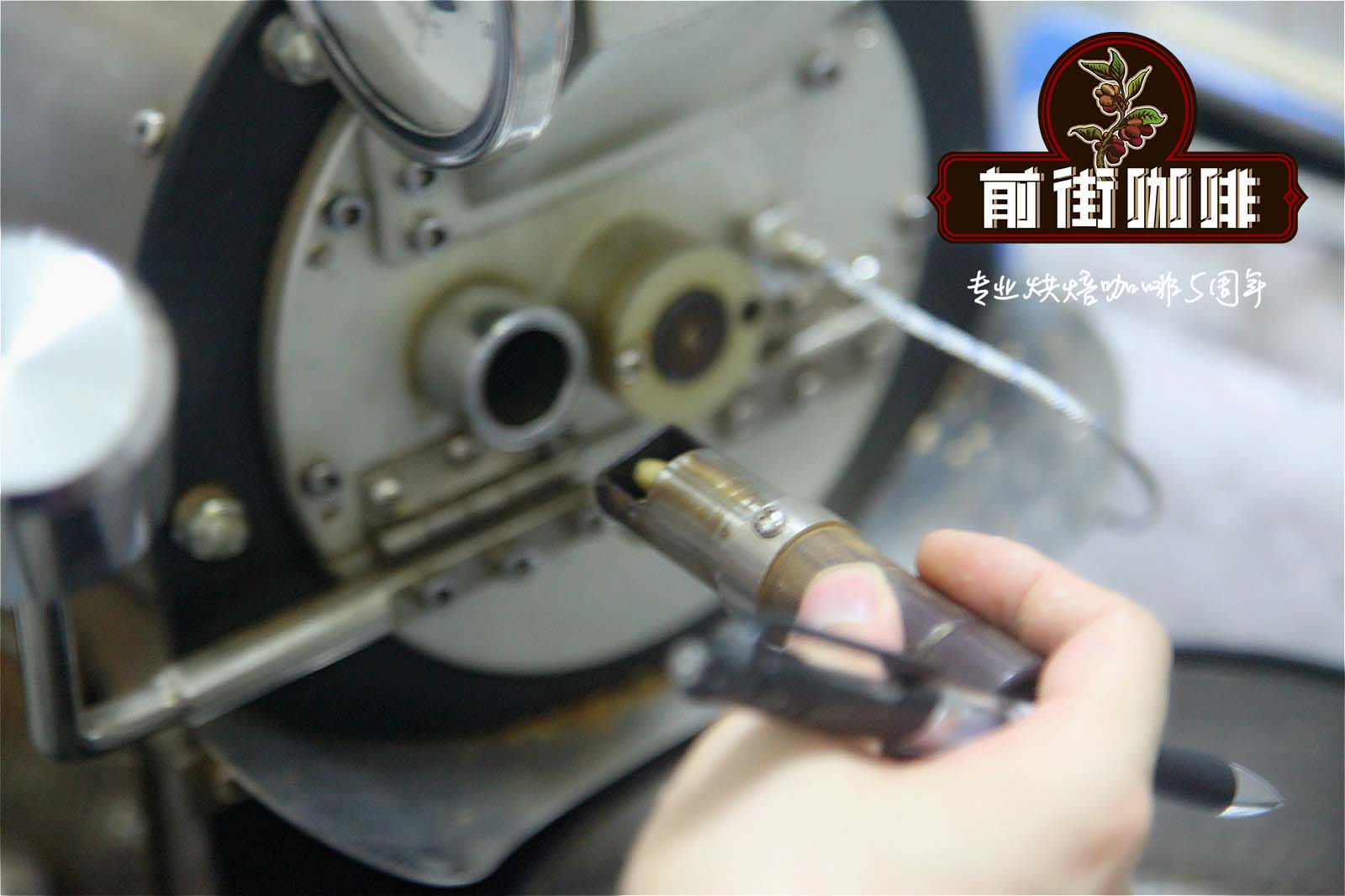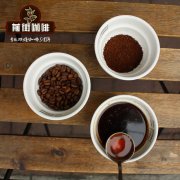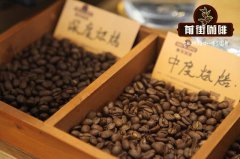Introduction to El Salvador Sun Pacarama Coffee beans _ El Salvador Coffee hand brewing method

Professional coffee knowledge exchange more coffee bean information please follow the coffee workshop (Wechat official account cafe_style)
Salvadoran Coffee-Sun Pacalama
Apaneca Las Ninfas
Raised Bed Natural
Pacamara
Roast
Introduction to by Chris Kornman
This tanning Pacamara from Finca Las Ninfas Farm is unusual in terms of production process and variety. It is softer on the palate, with flavors of green grapes, plums and peaches, lovely hibiscus, slight herbs, syrup-like thickness and cleanliness.
Ricardo Valdivieso is a fourth-generation coffee grower, and he and his family have been producing some very high-quality coffee for us for years, such as this wild sun-treated Pacamara. Las Ninfas finca, like Santa Leticia, another family farm, is full of coffee trees with excellent quality and beautiful scenery.
The farms were originally founded by the famous politician Francisco Menendez Valdevieso, a legendary former general, interim president and founder of El Salvador's education system. Ricardo is his great-grandson. In addition to coffee and primeval forests, the farms have some Mayan archaeological sites, and Ricardo's daughter, Monica, runs an ecotourism hotel in Santa Leticia.
The farms are located near the town of Apaneca, east of El Salvador's main coffee producer, Volcan de Santa Ana (aka Ilamatepec). This mountain range, which runs across the north and east of the country, is the highest active volcano in the country, providing an ideal climate for growing coffee, volcanic soil, stable Pacific breezes, sufficient altitude, and a clear distinction between rainy and dry seasons. make the soil fertile and rich in virgin forest resources.
Producing area / Apaneca, Ahuachap á n, El Salvador
Raw bean analysis by Chris Kornman
Obviously, the obvious feature of this sun-tanning Pacamara is that it is large enough, 75% more than 18 mesh. The average density is also above average, with moderate water content and slightly higher water activity, and the physical characteristics of these raw beans are common in Central American coffee found in summer. This is a delightful coffee, and roasting shows more of its flavor potential.
Pacamara is a unique variety. After more than 30 years of research, the Salvadoran Coffee Institute (ISIC) officially began to grow in El Salvador in the 1970s. Although Pacamara accounts for only 0.22% of El Salvador's total coffee production, it is loved by a large number of boutique coffee roasters. Interestingly, ISIC's initial quality report recommended that Pacamara is the most suitable for solarization.
The inheritance of Pacamara comes from two naturally mutated coffee varieties, Pacas and Maragogype. Pacas is of Bourbon descent and was first discovered by the Pacas family in the Santa Ana volcanic region of El Salvador, while Maragogype is a variety of Typica, first discovered in the Bahia Mountains of Brazil. Pacamara is famous for its large size because of the genetics of Maragogype.
Ikawa Analysis of by Jen Apodaca
Pacamaras beans are very large, and in my opinion, there is no doubt that this coffee needs extra Maillard reaction time to ensure that bean core roasting is fully developed. I decided to use the baking curve with a longer Maillard reaction time. I don't often bake and sunburn the pacamara. This pacamara has medium moisture content and high water activity. All these indicate that we need longer baking time.
Unlike other sun pacamara from El Salvador this week, this pacamara (Ikawa Baking (1)) has a high explosion temperature (407.5 °F) and an early explosion time. The first explosion time of Ikawa baking (2) is 15 seconds earlier than that of baking (1), and the explosion temperature of Ikawa baking (2) is also lower than that of baking (1). Ikawa baking (2) extends by 15 seconds at the end of baking. According to raw bean statistics, this coffee is slightly larger than other beans in the same producing area. I noticed that the Ikawa roaster is very good at copying curves (time and temperature are absolutely the same). The roasting quantity of 50g is very small and the size of coffee beans is very large, but these do not affect the accurate reproduction of the baking curve by Ikawa.
In the cup test, both baked tastes very good. This coffee has citric acid, malic acid and tartaric acid, and the juice is well balanced. If you want to pursue the flavor of tropical fruits (such as mango), use a shorter baking curve. Pursue a ripe, juicy BlackBerry feel and slightly extend the baking time.
Ikawa Bake (1)
Ikawa Bake (2)
Probatino baking analysis by Jen Apodaca
Using a 1kg Probatino roaster to bake low-density coffee is a challenge because of the high thermal effect of Probatino gas flames. So I want a lower bean temperature, but not so low that it delays or affects the baking process. As usual, I waited five minutes after the first hot baking to let the roaster cool completely, and then I started baking with the minimum heat (@ gas 2) that I thought was appropriate. After about two minutes, turn the heat to gas3, which is enough to push the baking to an explosion.
When the explosion temperature is 397.4 °F, I reduce the heat. The development time after explosion is 1:21 and the end temperature is 415.4 °F. My general experience is to maintain a temperature difference of at least 10 °F between the explosion and the end of the baking. I increased the temperature difference by 5 °F for this coffee bean.
In the cup test, the coffee is juicy and sweet, mixed with malic acid and citric acid, with a slight "baking flavor" (roastiness). The next time I bake this coffee, I will reduce more calories when it explodes to eliminate the "baking flavor". This is a great coffee, and every time it is roasted, it will shine before people's eyes.
Behmor baked by Evan Gilman
There are two kinds of sun pacamara this week, and the difference between them is very obvious. Las Ninfas is a kind of coffee with more drupe and citrus flavors. The flavor before the explosion is very sweet, with a very obvious strawberry flavor.
The explosion occurred clearly and violently, although there were some intermittent popping sounds before the explosion. I waited until there was a continuous banging sound before I saw it as the beginning of a real explosion. At the same time, I reduced the heat to P3, and the development time after the explosion was 1:15. The weight loss of baking is 13%.
This coffee produces a lot of "chaff" in roasting, so be sure to clean the roaster. In the cup test, almost all of us noticed peaches, cherries, honey and vanilla. This coffee is so sweet that you can pour it on pancakes and eat it together. It's no exaggeration at all.
Brewing analysis by Sandra Elisa Loofbourow
This week's Salvadoran coffee is full of interesting fruit flavors. This coffee from Las Ninfas Farm truly embodies its flower name ("Fairy" the Nymphs). From grapes to berries to drupe aromas, it exudes mouth-watering fruit flavors.
Aeropress . The ratio of water to powder (1:12) produces the sweetness of brown sugar and jujube, but the sour feeling of the juice still exists. Aromas of nectarine, grape, kiwifruit and apricot fill the coffee. I used the Aeropress reverse cooking method, including two 10-second stirring, one at 00:30 and the other at 1:00. At 01:20 I flipped the Aeropress over and began to extract it, which lasted about 15 seconds.
Switch to V60. When the gouache ratio is 1:16, the brown sugar flavor turns into syrup-like honey and raisins, and the fruit flavor becomes less intense. It is no longer nectarine but white peach and grape flavor with a pleasant fresh cherry finish. My cooking extraction is uniform, no powder wall, and the powder bed is straight (flat brew bed).
This coffee is clean, juicy and surprisingly sweet.
END
Important Notice :
前街咖啡 FrontStreet Coffee has moved to new addredd:
FrontStreet Coffee Address: 315,Donghua East Road,GuangZhou
Tel:020 38364473
- Prev

Geographical location of Nalingong coffee producing area in Colombia? What kind of treatment does Nalinglong coffee use?
Professional coffee knowledge exchange More coffee bean information Please pay attention to coffee workshop (Weixin Official Accounts cafe_style) Colombia Na Linglong coffee production area geographical location? What kind of treatment does Nalinglong coffee use? Colombia is currently the third largest coffee producer in the world, after Brazil and Vietnam. Commercial beans were first cultivated in the 1830s, and coffee accounted for export farmers in the 20th century.
- Next

El Salvador Christmas Hot Spring processing Plant Pacamara Coffee beans _ El Salvador Hot Spring Coffee good
Professional coffee knowledge exchange for more information about coffee beans, please follow the coffee workshop (Wechat official account cafe_style) I. El Salvador is the smallest country in Central America. The land consists of mountains, valleys, volcanoes, coastal plains and Murdol mountains, facing the Pacific Ocean. Santa Ana Manor in the west is the largest coffee producer. Lalibertad in the middle and Ursulutan in the east
Related
- Detailed explanation of Jadeite planting Land in Panamanian Jadeite Manor introduction to the grading system of Jadeite competitive bidding, Red bid, Green bid and Rose Summer
- Story of Coffee planting in Brenka region of Costa Rica Stonehenge Manor anaerobic heavy honey treatment of flavor mouth
- What's on the barrel of Blue Mountain Coffee beans?
- Can American coffee also pull flowers? How to use hot American style to pull out a good-looking pattern?
- Can you make a cold extract with coffee beans? What is the right proportion for cold-extracted coffee formula?
- Indonesian PWN Gold Mandrine Coffee Origin Features Flavor How to Chong? Mandolin coffee is American.
- A brief introduction to the flavor characteristics of Brazilian yellow bourbon coffee beans
- What is the effect of different water quality on the flavor of cold-extracted coffee? What kind of water is best for brewing coffee?
- Why do you think of Rose Summer whenever you mention Panamanian coffee?
- Introduction to the characteristics of authentic blue mountain coffee bean producing areas? What is the CIB Coffee Authority in Jamaica?

